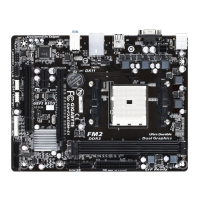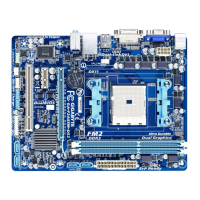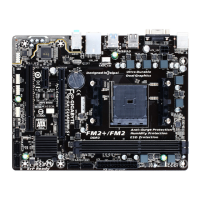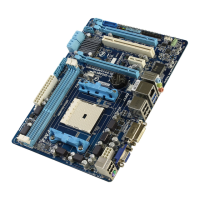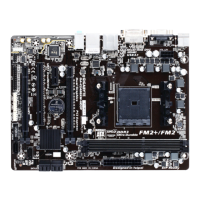- 43 -
8. After the creation is complete, the screen will return to LD View Menu where you will see the newly-
created array.
9. Press <Esc> to return to Main Menu and press <Esc> again if you want to exit the RAID BIOS utility.
MakingaSATARAID/AHCIDriverDiskette
BeforeinstallingWindowsXP,connectaUSBoppydiskdrivetoyourcomputerrstbecauseyouneedtoinstall
theSATARAID/AHCIdriverfromaoppydiskthatcontainsthedriverduringtheOSinstallation.Tocopythe
RAID/AHCIdriverforWindowsXP,copyalllesinthe\BootDrv\Hxp folder in the motherboard driver disk to
youroppydisk.ToinstallWindows7/Vista,youalsoneedtoinstalltheSATARAID/AHCIdriverduringtheOS
installation. To copy the RAID/AHCI driver for Windows 7, copy the whole Hw7 folder under the BootDrv folder
inthemotherboarddriverdisktoaUSBashdrive.
InstallingtheSATARAID/AHCIDriverandOperatingSystem
A. Installing Windows XP
Restart your system to boot from the Windows XP setup disk and press <F6> as soon as you see the message
"PressF6ifyouneedtoinstalla3rdpartySCSIorRAIDdriver."InserttheoppydiskcontainingtheSATA
RAID/AHCI driver. Follow the on-screen instructions to install the driver that suits your operating system. When
completed, proceed with the Windows XP installation.
B. Installing Windows 7/Vista
(ThefollowinginstructionsuseWindows7astheexampleoperatingsystem.)
Boot from the Windows 7 setup disk and perform standard OS installation steps. When the screen requesting
you to load the driver appears, select Browse.ThenbrowsetotheUSBashdrivethatcontainsthedriverand
select the location of the driver. The locations of the drivers are as follows:
RAIDdriverforWindows732-bit:Hw7\RAID\x86
RAIDdriverforWindows764-bit:Hw7\RAID\x64
AHCIdriverforWindows732-bit:Hw7\AHCI\W7
AHCIdriverforWindows764-bit:Hw7\AHCI\W764A
After loading the driver, continue the OS installation.
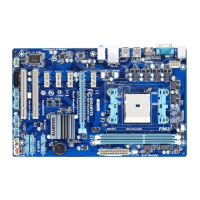
